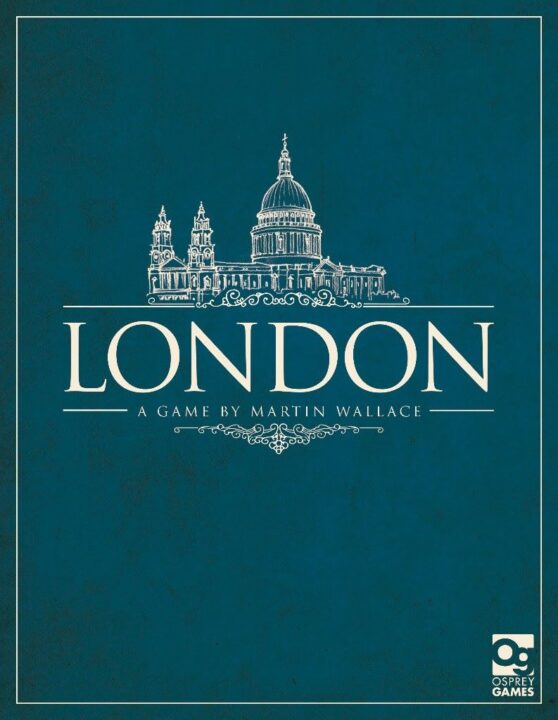Overview
Welcome to my deep dive into ‘London (Second Edition)‘, a thought-provoking board game where strategy and history intertwine. As a board game enthusiast, I delight in the intricate dance of mechanics that make each play unique. In this review, we’ll explore the intriguing elements that stand out, from the efficient deck-building mechanism to the delicate balance of poverty and loan management, right through to the rich historical theme woven throughout. Join me on a journey through time to recreate one of the world’s greatest cities.
How It Plays
Setting Up
To begin ‘London: Second Edition,’ players each get a starting hand of cards, place a handful of initial resources on the board, and select unique starter abilities. These essential pieces set the stage for a recreation of rebuilding London following The Great Fire. Coins are distributed, boroughs are laid out, and stacks of cards (representing different historical periods) are placed within easy reach.
Gameplay
Dive into the pivotal role of municipal mastermind, your turns as straightforward as they are savvy: Draw cards, develop your city tableau, and carefully mitigate poverty. Manage loans and reconstruct London’s districts to curtail poverty points. Efficient turns see a seamless melding of card combo strategy and resource management—a linchpin to victory.
Winning the Game
After a fixed number of eras, the game concludes, transitioning into a determinative moment as final scores are tallied. Victory in ‘London’ comes not just through the impressive restoration of the city but mastering the subtle balance between expansion and poverty relief, securing a historical win with modern strategy chops.
Want to know more? Read our extensive strategy guide for London (Second Edition).
Mastering Resource Management
Deck-building games have a unique rhythm, once you get the hang of it. London (Second Edition), has a spellbinding cadence. As a gamer, you find bliss in that moment when your hand flows into another, procuring an efficient engine—one that hums with productivity, mirroring London’s own Industrial-era growth.
Strategic Card Accumulation
The joy in cautiously curating your deck cannot be overstated. I remember splaying my cards during a critical session, each building, bus, and borough representing a choice, an opportunity. My friends gazed on, witnessing a smoothly operating deck – a compact but powerful ensemble resulting from deliberate pruning and acquisitions.
Lean and Mean
Transitions within turns felt near seamless. It’s testament to the tight design of the game’s deck-building mechanics. A feeling of purring efficiency permeates those plays that are perfectly planned. Card by card, you’re weaving the fabric that is burgeoning, industrial London.
Moving onto the next topic, the intertwining of Poverty and Loan Strategy retains gravy density in discussions, following the elegant operations of precise deck-building mechanics.

The Balancing Act: Poverty’s Grip & Loans in London
Navigating through the foggy avenues of poverty and the strategic intricacies of handling loans is, without a doubt, a pivotal aspect of London (Second Edition). My first playthrough was a tightrope walk that led me to realize the weight of each decision. During one intense round, desperate for progress, I shattered my no-loan policy and the tide turned—for better or worse, the loans came to my rescue.
Leveraging Loans Wisely
Subsequently, I’ve strategized the timing and payoff of loans diligently, always accounting for the lurking dangers of poverty points. Early loan acquisition can fuel indispensable actions, but pacing is critical. One must be as calculated as a miser to navigate this perilous path successfully.
The Risk & Reward Tango
Too often, players become embroiled in the powerful attraction of instantaneous benefits, neglecting the creeping shadow of poverty that unfolds. London’s enduring call to rebuild doesn’t come without the risk of succumbing to destitution. Excellence in loan and poverty management became the dance I learned to perfect.
As we shelve our review of Poverty and Loan Strategy in London, the cradle of the Industrial Revolution awaits to examine a closely related aspect – the Historical Theme Implementation.

Central Era Comes Alive
Past Meets Present: During a cozy game night, my copy of London (Second Edition) bridges us to a bygone epoch as we shuffle the erudite deck. Tangibly holding the historically inspired cards, peers ponder over poet William Blake and The British Museum just as our ancestors might have in the 19th century cityscape we’re reconstructing. Here, learning subtly nestles amidst our strategies.
Thematically Steeped Design: Elegantly, London isn’t a regurgitation of dry facts; rather, it’s where historical influence breathes life into every decision. As we stack cards symbolizing actual historic London buildings and events, we’re inadvertently taken on an educational jaunt. This layering of theme onto game mechanics reinforces the feel that indeed, this is no mere game, but a story’s unfolding.
In these cards, history dances with modern recreation. For enthusiasts eager to luxuriate in London’s rich tapestry while outwitting friends, I nod affirmatively—here is a game that garnishes brainy pleasure with historical delight.

Conclusion
In concluding this review of London (Second Edition), the game’s mechanics, combining deck-building efficiency and a poverty and loan strategy engulfed within a historical theme, has proven to be an innovative gaming experience. These elements come together to challenge players tactically, while offering a deep dive into London’s gritty yet rich past. Through its sophisticated gameplay, it fosters a fiercely competitive yet immensely fun environment that also succeeds in bringing about thoughtful discussions among players. Given its blending of strategic gameplay with a well-integrated theme, I find London (Second Edition) to be a standout among its peers, earning it a strong recommendation for enthusiasts of strategy games with a historical twist.

